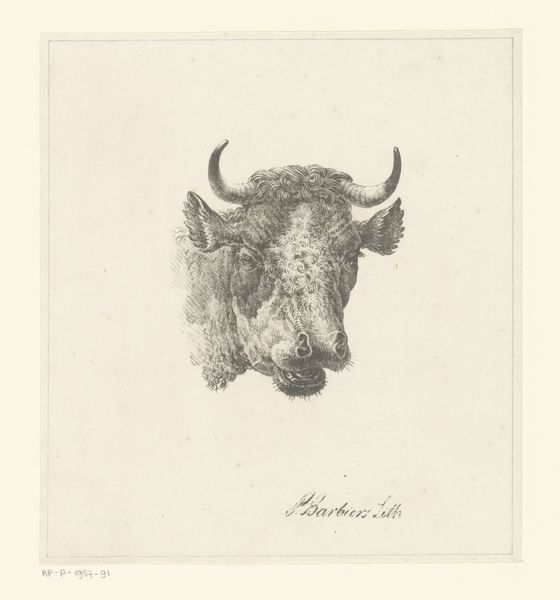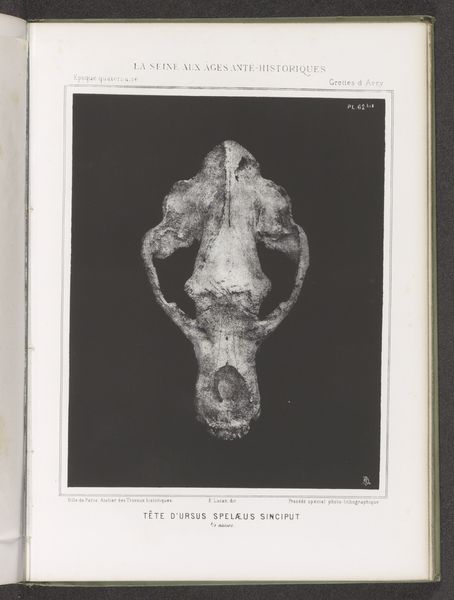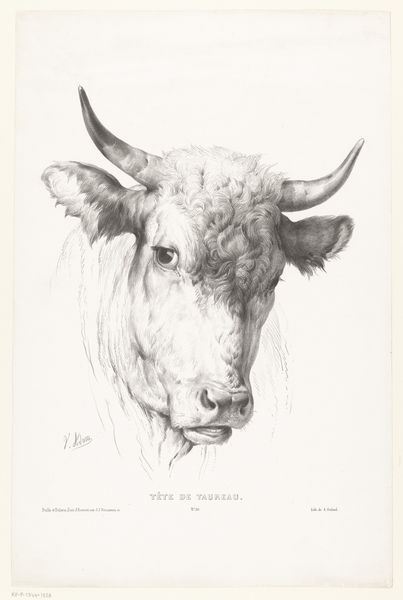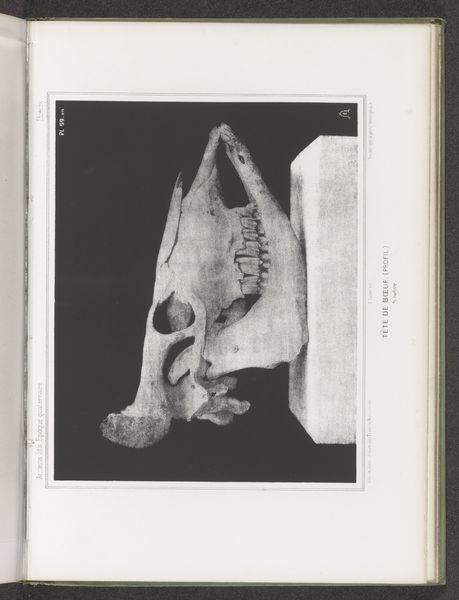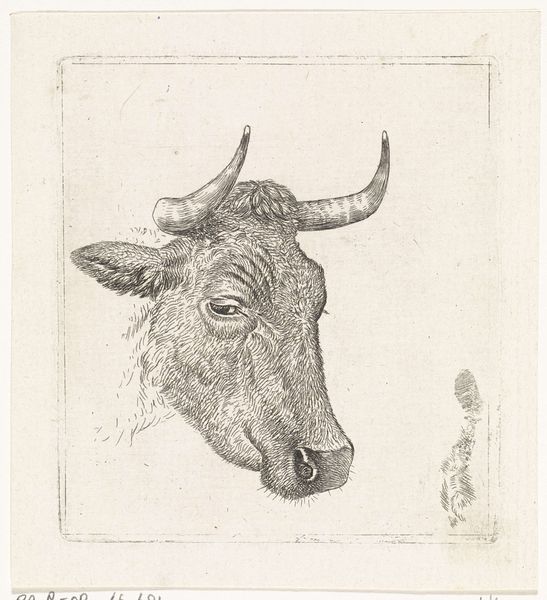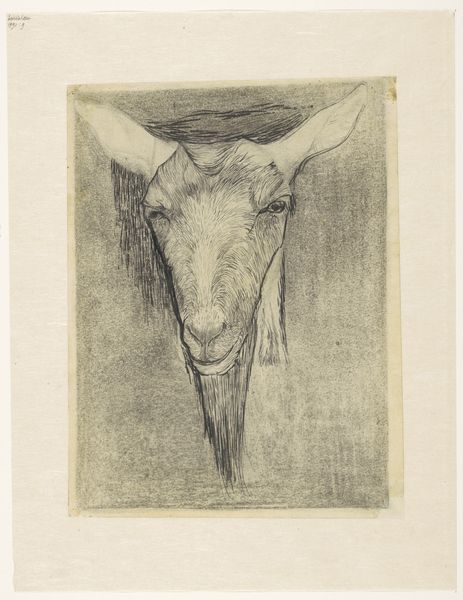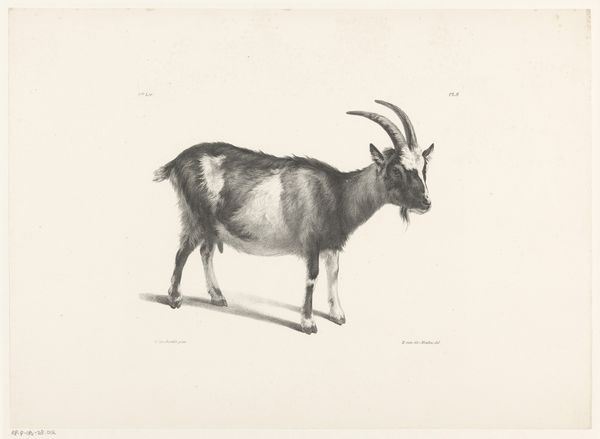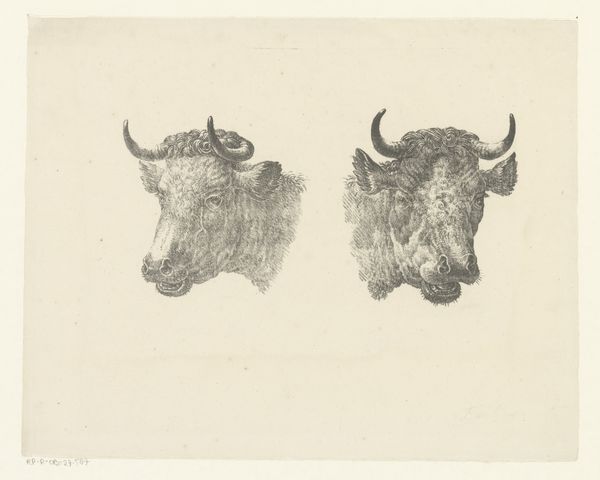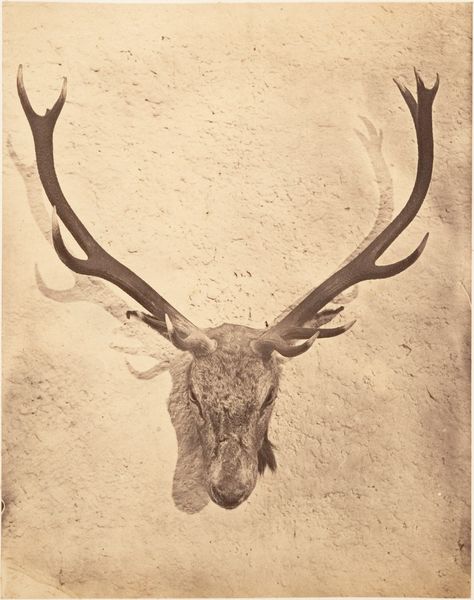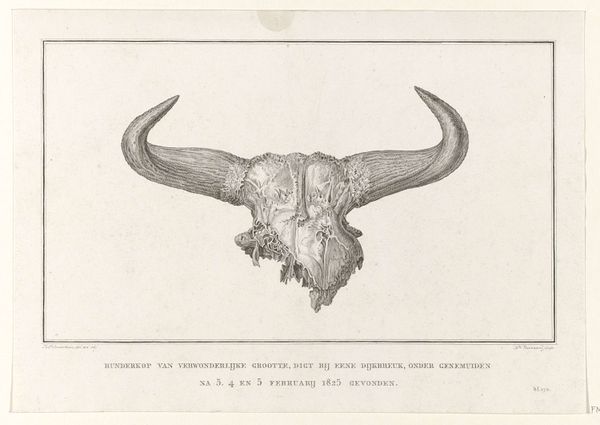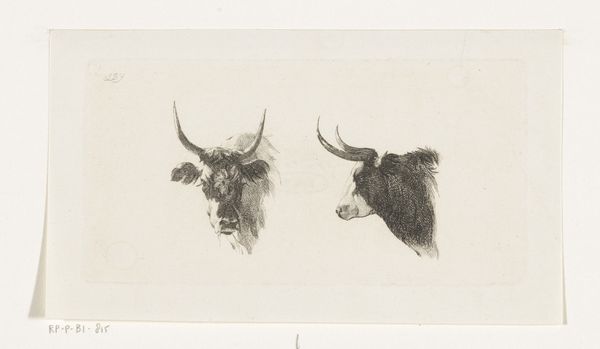
print, photography, gelatin-silver-print
#
still-life-photography
# print
#
figuration
#
photography
#
ancient-mediterranean
#
gelatin-silver-print
#
history-painting
#
realism
Dimensions: height 184 mm, width 231 mm
Copyright: Rijks Museum: Open Domain
Curator: Here we have an intriguing gelatin-silver print, a photograph dating back to before 1869, attributed to an anonymous creator, titled "Schedel van een rund, en profil," or "Skull of a Bovine, in Profile". It is quite striking, wouldn't you say? Editor: Indeed. It hits you with this stark image right away, almost haunting in its stark simplicity against that deep black background. There is so much texture and bone detail. How was something like this used? Curator: It likely served a scientific purpose. Photography in the mid-19th century became a powerful tool for documentation, especially within fields like paleontology and anatomy. Photographs were often used for anatomical and zoological comparisons in educational materials. Editor: That is fascinating, considering that creating gelatin silver prints was so process intensive back then, compared to today's digital image. To produce this photograph would mean mixing emulsions, coating glass plates, long exposure times and careful darkroom techniques. All that effort speaks volumes. Curator: Exactly! The social context surrounding photography at this time is crucial to consider. The rise of positivism and scientific advancement created a need for accurate visual records and photography filled that niche. This photograph shows a new public role of visual imagery within early science. Editor: Thinking about it as an object too, it looks as if it is displayed in a larger bound publication and the contrast feels very staged. Was photography democratizing image-making and distribution, as opposed to painting, because of lower skill requirements and costs of materials? Curator: To some extent. Photography definitely challenged established art hierarchies by opening up possibilities for a wider range of people to engage in image production. However, accessing this level of fine and exact detail meant investment in precise lenses and darkroom tools. But as photography evolved, it gradually reshaped artistic and social practices and challenged traditional art hierarchies. Editor: That puts a very interesting perspective to that skull. When you start thinking of all that goes into making a simple photo you realize it has deeper cultural importance than being something straightforwardly objective. Curator: I agree entirely. By exploring the photograph’s origins and context we realize the history surrounding visual representation, power and cultural changes. Editor: Well, seeing how it pushes at the boundaries of visual representation and challenges simple objectivitiy, it definitely makes me appreciate it. Curator: It does give us some food for thought doesn't it?
Comments
No comments
Be the first to comment and join the conversation on the ultimate creative platform.
